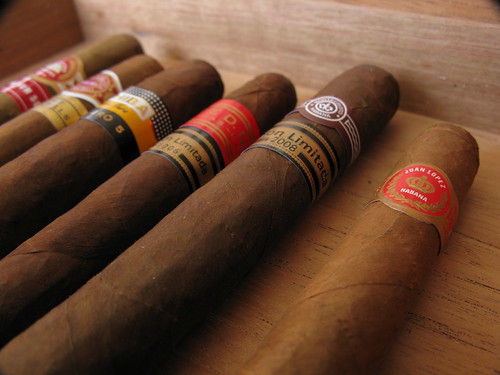Cigars 101: An Overview of Cigars
Cigars have long been associated with the rich and powerful, with relaxation and rich flavor. Cigar aficionados have created a culture around the art of smoking, assembling various theories and accessories to debate and facilitate smoking. Much like wine tasting, cigar smoking has been seen as a diversion of the upper echelons of society.
It is believed that cigars were probably first produced in Spain, and then quickly caught on in other European countries. Although many different countries manufacture cigars, Cuban cigars have long been highly regarded as one of the most flavorful and rich of all cigars. This is due to regional microclimates that are said to produce the highest quality tobacco, as well as the skill of the country's cigar makers. Other countries that produce significant amounts of tobacco and cigars include Brazil, Mexico, Honduras, Ecuador, Cameroon, Dominican Republic, Indonesia, and the United States. Why have cigars long caught the attention of so many? Many speculate that the cigar's main attraction is in the way it is manufactured. High quality cigars are always wrapped by hand. Unlike cigarettes, cigars undergo a lengthy process of fermentation and aging (much like wine), resulting in subtle flavors and textures. They are highly individual and the best cigars will provide no smoky aftertaste at all.
The taste of cigars is much more complex than cigarettes. The majority of all cigars are created by wrapping three different layers of tobacco leaves together. High quality cigars usually contain long leaves of nicotine as the filler, although they may also contain a combination of scraps. This results in subtle variations, different textures, and complex flavors. Cigarettes, on the other hand, are mass-produced and generally only contain one type of tobacco. Cigars also come in an incredible variety of flavors. The dedicated cigar aficionado can find chocolate, vanilla, apple, and even coffee-flavored cigars!
Although cigars have long been lauded for their smooth and complex flavors, they can also pose a great health risk. All tobacco contains nicotine. We've all heard about the negative health risks of nicotine, but what does it do exactly? Nicotine is a stimulant that produces a sense of euphoria. Even the casual smoker cannot escape the fact that nicotine is highly addictive and contains various toxins, carcinogens, and irritants. Although most connoisseurs of cigars will avoid inhaling the smoke, they are still at risk of developing various types of oral and larynx cancers.
407
PPPPP








